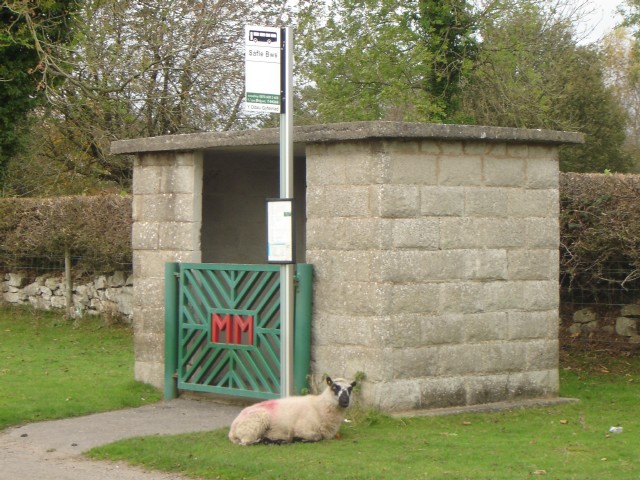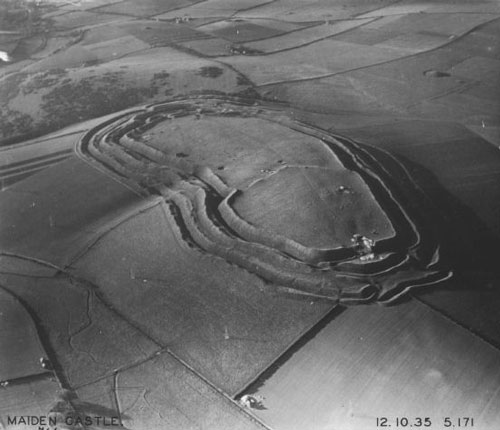|
Rhosesmor
Rhosesmor is a small village near Mold, Flintshire, in north-east Wales. The village lies near the parishes of Halkyn and Rhes-y-cae. The hamlet of Wern-y-Gaer is encompassed by the boundaries of the village. The hill fort site affords views across the Clwydian Hills to the west and the whole sweep of Wirral to the Sefton coastline and Liverpool and further east. History The new parish of Caerfallwch (the traditional Welsh placename for the village) was created on 23 October 1876, from part of the township of Caerfallwch, which until that time had been in the parish of Northop. The ''London Gazette'' of the 27 October 1876 defined the boundaries of the new parish: :"''All that part of the parish of Northop in the county of Flint and in the diocese of Saint Asaph which is comprised within and is co-extensive with the limits of that portion of the township of Caerfallwch wherein the present incumbent of the said parish of Northop now possesses the exclusive cure of souls, ... [...More Info...] [...Related Items...] OR: [Wikipedia] [Google] [Baidu] |
Moel Y Gaer, Rhosesmor
Moel y Gaer (Welsh for "bald hill of the fortress") is an Iron Age hillfort located on a summit at the southern end of Halkyn Mountain, overlooking the village of Rhosesmor, Flintshire, Wales. It is a well-preserved hillfort overlooking the Dee Estuary. Excavations in the early 1970s revealed a sequence of defensive structures made of timber and several phases of building work inside the ramparts. The hillfort Excavations suggest that the site was occupied, perhaps sporadically, from the Neolithic period to sometime before the Roman conquest of the area. Remains of a timber long house on the hill summit have been dated to the third millennium BC and may represent the earliest human occupation of the region. Defensive construction at the site began around the late seventh century BC, and at first consisted of a timber palisade enclosing a settlement of timber roundhouses. The palisade was later replaced by a stone-and-earth rampart and a ditch. Much of the archaeological work ... [...More Info...] [...Related Items...] OR: [Wikipedia] [Google] [Baidu] |
Diocese Of Saint Asaph
The Diocese of Saint Asaph is a diocese of the Church in Wales in north-east Wales, named after Saint Asaph, its second bishop. Geography The Anglican Diocese of St Asaph in the north-east corner of Wales stretches from the borders of Chester in the east, to the Conwy valley in the west, to Bala in the south-west, and Newtown in the south-east. The population is in excess of half a million people. The more populous areas are to be found along the coast and in the large conurbation of Wrexham, the principal town. The industrial areas around Wrexham and Deeside have undergone great change in the past decade or so. Where once the coal, steel and textile industries provided most of the employment, the economy is now much more diversified and one of the fastest growing in the UK. A major employer is Airbus UK (currently part of BAE Systems), while Wrexham Industrial Estate is one of the largest in Europe. North-east Wales also acts as a dormitory area for Chester Business Park, ... [...More Info...] [...Related Items...] OR: [Wikipedia] [Google] [Baidu] |
Halkyn
Halkyn ( cy, Helygain ; Flintshire Welsh: ''Lygian '') is a village and community in Flintshire, north-east Wales and situated between Pentre Halkyn, Northop and Rhosesmor. At the 2001 Census the population of the community was 2,876, increasing slightly to 2,879 at the 2011 Census. Pentre Halkyn is in the community. History Halkyn is one of the ancient parishes of Flintshire, originally comprising the townships of Hendrefigillt, Lygan y Llan and Lygan y Wern. The area was notable during the Roman occupation for the mining of lead. The village was recorded in the ''Domesday Book'' of 1086 as ''Alchene'', when it was then part of Cheshire, in England. Halkyn had many public houses in the early 19th century. These public houses included the Crown Inn, (now known as Crown Cottages) which was situated on the left-hand side as you go towards Rhes-y-cae from the Old Halkyn Post Office. The Royal Oak (now a private house known as the Old Royal Oak), directly opposite the Blue Be ... [...More Info...] [...Related Items...] OR: [Wikipedia] [Google] [Baidu] |
Northop
Northop ( cy, Llaneurgain) is a village, community and electoral ward situated in Flintshire, Wales, approximately 12 miles west of the city of Chester, midway between Mold and Flint, and situated just off junction 33 of the A55 North Wales Expressway. At the 2001 Census, the population of Northop was 2,983, increasing to 3,049 at the 2011 census. The community includes Sychdyn. The village is home to two pubs, a cricket club, and a golf course. At the centre of the village stands the church of St Eurgain and St Peter, towering 98 feet above the village. Northop College based in Northop, offering horticultural courses for students of all ages, in areas such as Animal Care, floristry, Horse Care, Horticulture and agricultural machinery. Glyndŵr University has a campus based in Northop; this is the university's home for land-based and rural education, and a centre for courses on animal studies and biodiversity. English toponym The name seems to be derived from ''North Ho ... [...More Info...] [...Related Items...] OR: [Wikipedia] [Google] [Baidu] |
Rhes-y-cae
Rhes-y-cae is a small parish and village in Flintshire, Wales. Literally translated from Welsh, Rhes-y-cae is 'Row of fields'. It is situated between Pentre Halkyn and Rhosesmor and is part of the local government community of Halkyn Halkyn ( cy, Helygain ; Flintshire Welsh: ''Lygian '') is a village and community in Flintshire, north-east Wales and situated between Pentre Halkyn, Northop and Rhosesmor. At the 2001 Census the population of the community was 2,876, increas .... Local facilities include a chapel, a church and a park, which is situated next to Ysgol Rhes-y-cae. The school closed in 2013, due to there being too few students to warrant its continued operation. The parish was consecrated on 27 June 1847. The village shop has shut down, the bakery has closed to the public, and Rhes-y-cae pub, The Miners Arms, closed in 2014. Every summer the Rhes-y-cae Show takes place, featuring dog racing and show jumping. Around 600 people attend each year. References ... [...More Info...] [...Related Items...] OR: [Wikipedia] [Google] [Baidu] |
Primary School
A primary school (in Ireland, the United Kingdom, Australia, Trinidad and Tobago, Jamaica, and South Africa), junior school (in Australia), elementary school or grade school (in North America and the Philippines) is a school for primary education of children who are four to eleven years of age. Primary schooling follows pre-school and precedes secondary schooling. The International Standard Classification of Education considers primary education as a single phase where programmes are typically designed to provide fundamental skills in reading, writing, and mathematics and to establish a solid foundation for learning. This is ISCED Level 1: Primary education or first stage of basic education.Annex III in the ISCED 2011 English.pdf Navigate to International Standard Classification of Educati ... [...More Info...] [...Related Items...] OR: [Wikipedia] [Google] [Baidu] |
Church (building)
A church, church building or church house is a building used for Christian worship services and other Christian religious activities. The earliest identified Christian church is a house church founded between 233 and 256. From the 11th through the 14th centuries, there was a wave of church construction in Western Europe. Sometimes, the word ''church'' is used by analogy for the buildings of other religions. ''Church'' is also used to describe the Christian religious community as a whole, or a body or an assembly of Christian believers around the world. In traditional Christian architecture, the plan view of a church often forms a Christian cross; the center aisle and seating representing the vertical beam with the bema and altar forming the horizontal. Towers or domes may inspire contemplation of the heavens. Modern churches have a variety of architectural styles and layouts. Some buildings designed for other purposes have been converted to churches, while many ori ... [...More Info...] [...Related Items...] OR: [Wikipedia] [Google] [Baidu] |
Roman Britain
Roman Britain was the period in classical antiquity when large parts of the island of Great Britain were under occupation by the Roman Empire. The occupation lasted from AD 43 to AD 410. During that time, the territory conquered was raised to the status of a Roman province. Julius Caesar invaded Britain in 55 and 54 BC as part of his Gallic Wars. According to Caesar, the Britons had been overrun or culturally assimilated by other Celtic tribes during the British Iron Age and had been aiding Caesar's enemies. He received tribute, installed the friendly king Mandubracius over the Trinovantes, and returned to Gaul. Planned invasions under Augustus were called off in 34, 27, and 25 BC. In 40 AD, Caligula assembled 200,000 men at the Channel on the continent, only to have them gather seashells ('' musculi'') according to Suetonius, perhaps as a symbolic gesture to proclaim Caligula's victory over the sea. Three years later, Claudius directed four l ... [...More Info...] [...Related Items...] OR: [Wikipedia] [Google] [Baidu] |
Hill Fort
A hillfort is a type of earthwork used as a fortified refuge or defended settlement, located to exploit a rise in elevation for defensive advantage. They are typically European and of the Bronze Age or Iron Age. Some were used in the post- Roman period. The fortification usually follows the contours of a hill and consists of one or more lines of earthworks, with stockades or defensive walls, and external ditches. Hillforts developed in the Late Bronze and Early Iron Age, roughly the start of the first millennium BC, and were used in many Celtic areas of central and western Europe until the Roman conquest. Nomenclature The spellings "hill fort", "hill-fort" and "hillfort" are all used in the archaeological literature. The ''Monument Type Thesaurus'' published by the Forum on Information Standards in Heritage lists ''hillfort'' as the preferred term. They all refer to an elevated site with one or more ramparts made of earth, stone and/or wood, with an external dit ... [...More Info...] [...Related Items...] OR: [Wikipedia] [Google] [Baidu] |
Celt
The Celts (, see pronunciation for different usages) or Celtic peoples () are. "CELTS location: Greater Europe time period: Second millennium B.C.E. to present ancestry: Celtic a collection of Indo-European peoples. "The Celts, an ancient Indo-European people, reached the apogee of their influence and territorial expansion during the 4th century bc, extending across the length of Europe from Britain to Asia Minor."; . " e Celts, were Indo-Europeans, a fact that explains a certain compatibility between Celtic, Roman, and Germanic mythology."; . "The Celts and Germans were two Indo-European groups whose civilizations had some common characteristics."; . "Celts and Germans were of course derived from the same Indo-European stock."; . "Celt, also spelled Kelt, Latin Celta, plural Celtae, a member of an early Indo-European people who from the 2nd millennium bce to the 1st century bce spread over much of Europe."; in Europe and Anatolia, identified by their use of Celtic lang ... [...More Info...] [...Related Items...] OR: [Wikipedia] [Google] [Baidu] |
Metal Mining In Wales
Mining in Wales provided a significant source of income to the economy of Wales throughout the nineteenth century and early twentieth century. It was key to the Industrial Revolution. Wales was famous for its coal mining, in the Rhondda Valley, the South Wales Valleys and throughout the South Wales coalfield and by 1913 Barry had become the largest coal exporting port in the world, with Cardiff as second, as coal was transported down by rail. Northeast Wales also had its own coalfield and Tower Colliery (closed January 2008) near Hirwaun is regarded by many as the oldest open coal mine and one of the largest in the world. Wales has also had a significant history of mining for slate, gold and various metal ores. History There had been small-scale mining in Wales in the pre-Roman British Iron Age, but it would be undertaken on an industrial scale under the Romans, who completed their conquest of Wales in AD 78. Substantial quantities of gold, copper, and lead were extracted ... [...More Info...] [...Related Items...] OR: [Wikipedia] [Google] [Baidu] |






